What Is Strong?
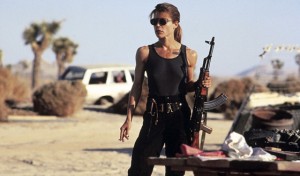 The call for strong female characters is often met with pursed lips and furrowed brows. What exactly is a strong female character? Do we mean Ripley (Alien) or Sarah Connor (Terminator 2), almost male-like in their physique and demeanor? Or Buffy Summers (Buffy the Vampire Slayer) and Wonder Woman, beautiful women endowed with superhuman abilities?
The call for strong female characters is often met with pursed lips and furrowed brows. What exactly is a strong female character? Do we mean Ripley (Alien) or Sarah Connor (Terminator 2), almost male-like in their physique and demeanor? Or Buffy Summers (Buffy the Vampire Slayer) and Wonder Woman, beautiful women endowed with superhuman abilities?
Many times the bafflement for creative parties is that women will disagree – quite strongly at times – about where they stand in regard to these and other characters. Some love what Ripley and Sarah Connor represent; others argue that their lack of femininity implies women have to become more like men in order to be heroic. While beautiful, Buffy has somehow transcended most of the fray. In part that may be due to her characterization, but also the wonderful cast of characters she fought alongside.
Beauty often muddles the perception of a strong female character, though, and the presentation of that beauty through sexualized costumes can evoke intense and varying opinions. I’ve observed that people often appear more willing to forgive the sexualization of a female character if they’re fond of the show, movie, book, or comic where that character’s story is told. Those fans’ opinions are often dismissed because it is perceived as a bias. A while back, for example, I wrote a blog about the Slave Leia attire – a costume that has proven to be a touchstone in the sexualized female character debate. 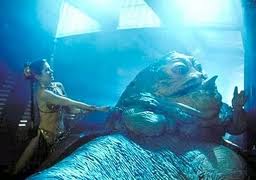 Other women have written on the subject as well – on both sides of the argument – but I’ve found that those opposed to Slave Leia rarely argue the merits of the costume in the story, instead looking only at the effects it might have for women in the real world. Similarly, I’ve seen fans argue that Daenerys’ nudity or Catwoman’s overt sexuality, either of which could be considered equally as titillating as Slave Leia, empower women. Everyone, women and men, has the right to their opinion, and hearing each other out is often insightful. What’s unfortunate, I believe, is when these discussions become focused only on the merits of the imagery, and not on the full context of the story. In fact, many times the people dismissing a female character don’t even understand the story. Ironically, by judging image and not story, those people are perpetuating the superficial society in which we’re only judged by how we look and not for what we do.
Other women have written on the subject as well – on both sides of the argument – but I’ve found that those opposed to Slave Leia rarely argue the merits of the costume in the story, instead looking only at the effects it might have for women in the real world. Similarly, I’ve seen fans argue that Daenerys’ nudity or Catwoman’s overt sexuality, either of which could be considered equally as titillating as Slave Leia, empower women. Everyone, women and men, has the right to their opinion, and hearing each other out is often insightful. What’s unfortunate, I believe, is when these discussions become focused only on the merits of the imagery, and not on the full context of the story. In fact, many times the people dismissing a female character don’t even understand the story. Ironically, by judging image and not story, those people are perpetuating the superficial society in which we’re only judged by how we look and not for what we do.
In my blog about Princess Leia as the gold standard for a strong female heroine, I discussed the storytelling dynamic of balancing her sexuality with her role as a leader of the Rebellion. This same internal struggle for identity – can I be a mother, a friend, a nurturer or a warrior, leader, taskmaster? – exists for women in real life. Sometimes the roles go hand-in-hand, and other times they are diametrically opposed. While I think Leia is an exceptional heroine, she was never given a true heroine’s journey. On the upside, George Lucas, and especially his team of storytellers from The Empire Strikes Back, did such a phenomenal job establishing her strength of character that Leia hasn’t really wavered in how she is portrayed within the Expanded Universe.
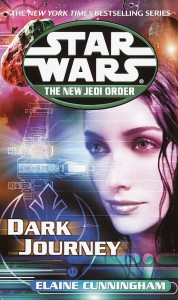 Jaina Solo, the daughter of Han and Leia, started out on a great heroine’s journey arc. The stories confronted Jaina with questions about her identity as a daughter, a sister, and a Jedi, her mother’s choices, her female Master Mara Jade’s identity crisis as a mother/warrior, how all those variables affected her life, and most importantly the isolation heroes often face. Too soon the EU faltered with Jaina’s story, though, and became afraid to deal with her role as the Sword of the Jedi – a label foisted upon her by Luke Skywalker in Destiny’s Way – as it impacted against her potential future as the Imperial Womb of Destiny – a nickname given to her by fans when it became apparent from the Legacy comics that she would most likely be the mother of a future Fel Emperor, when this is exactly the identity crisis most women will face in real life.
Jaina Solo, the daughter of Han and Leia, started out on a great heroine’s journey arc. The stories confronted Jaina with questions about her identity as a daughter, a sister, and a Jedi, her mother’s choices, her female Master Mara Jade’s identity crisis as a mother/warrior, how all those variables affected her life, and most importantly the isolation heroes often face. Too soon the EU faltered with Jaina’s story, though, and became afraid to deal with her role as the Sword of the Jedi – a label foisted upon her by Luke Skywalker in Destiny’s Way – as it impacted against her potential future as the Imperial Womb of Destiny – a nickname given to her by fans when it became apparent from the Legacy comics that she would most likely be the mother of a future Fel Emperor, when this is exactly the identity crisis most women will face in real life.
Interestingly enough, Destiny’s Way was published in 2002, the same year Attack of the Clones hit the silver screen. Padmé Amidala’s role hadn’t really shifted from the leader and warrior of The Phantom Menace; only her relationship with Anakin Skywalker had changed. Once Revenge of the Sith came out in 2005, though, the perception of her character – pregnant and torn between the many identities that women are forced to confront – had shifted, and so too we began to see a change in how female characters were used in the EU books.
I don’t believe George Lucas ever intended to present Padmé as weak or to minimize her heroism because of her pregnancy. In fact, when asked about the character in The Clone Wars, voice actress Cat Taber quite often makes a point of emphasizing that when discussing Padmé with George Lucas, they both want to be clear that she is a strong character. At some moment though, the fierce heroine of The Phantom Menace was lost in the minds of many fans. As a fan of the franchise and also a proponent of strong female heroines I can’t help but notice that when lists are generated on geek websites or in genre-specific magazines, Padmé and Leia are often also-rans or not in the mix at all. Did losing “the will to live” seal her fate as a strong female hero? Or are fans simply too hard on her because she died, or failed Anakin in some way? 
Personally, I think many fans’ take a view of Padmé that is simply too superficial. I’ve asked Lex, who was among a core set of fanfiction writers I knew from back in the Prequel Trilogy days who really understood the power of her character, to go into more detail about her portrayal in the movies. Before he does that, though, I thought it was important to go back and look at what exactly the term “strong” means, because we can’t talk about Padmé without taking that step first. Let’s start with the word itself.
Type it into the thesaurus and you’ll get a wide range of synonyms. Some for physically powerful: burly, brawny, strapping, sturdy, and beefy; others for robust: stout, solid, resilient, and tough. Then there’s more for fervent: great, intense, fierce, passionate; and also for keen: dedicated, firm, zealous, and eager.
Popping over to the dictionary (courtesy of Microsoft Word’s Encarta feature), “strong” is flushed out by 25 different definitions. The ones that are particularly relevant: 1. physically powerful, 2. using force, 3. robust and sturdy, 4. emotionally resilient, 5. healthy and well, 6. thriving, 7. likely to succeed, 8. convincing, 9. knowledgeable, 10. exerting influence, 11. effective, 12. felt powerfully, 13. distinctive, and 14. extreme.
So the word “strong,” by the book, could have quite a variety of meanings when discussing the strength of characters, and it will mean many different things to many different people. Certainly it goes far beyond the notion of strapping herculean physical prowess. Yet when people talk about strong male characters, are they referring to muscle-bound supermen? I’d argue even Superman and his ilk are really strong for their choices in the moments that don’t require anything more than a singular act of will.
None of the male heroes in Star Wars are particularly physically impressive. Luke and Anakin Skywalker don’t cut imposing physiques of He-Man proportions, nor do Obi-Wan Kenobi or Han Solo. The true hero of the Star Wars saga, Luke, failed to heave his sunken X-wing from the swamp on Dagobah, only to be one-upped by a nine-hundred year old troll a third his size – a feat which has resulted in the catch-phrase “size matters not” becoming the mantra of the not-so-big on Earth.
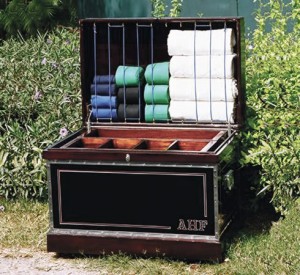
As a woman, that brief phrase from Yoda’s dialogue has had significant meaning in my life. I can’t help but to think back to one particular incident, that I hope will illustrate my point, when I was faced with the need to move a tack trunk full of horse equipment into the back of my truck. I needed to get it done in short order to make my schooling slot at the horse show – right after being informed that the grooms, a pair of whom could have hefted it up with ease, had been called away to an emergency at the barn down the road. All I had available to get that trunk off the ground and up the three-plus feet to the truck bed was my 5’3” body, a horse wrapped and content to stay put in his stall, six bags of hard-packed shavings, a large muck bucket, and my brain. Let’s just say, geometry and physics classes were put to good use. I emptied the trunk – about three feet wide by two feet deep by two feet high, made of heavy-duty wood – and started arranging the bags and bucket into an ascending ramp. With the help of my horse – okay, really just his lead rope – I heaved, shoved, and by sheer force of will wrestled that trunk up my makeshift ramp and into the back of my truck. Then I hurriedly packed it back up, tossed the shaving bags in behind it, and went on my merry way. (And yes, I did make it in time for my schooling slot.)
I could talk about the energy, power, and all the other scientific terms that quantify moving a mass from one point to another. Perhaps it took me longer or I expended more energy than two strapping men would have. None of that matters, as far as I see it, because the trunk got from point A to point B because I decided it needed to be done.
This determination to succeed is exactly the same quality that defines what we’ve come to know as heroic characters. Luke Skywalker believes he can sink his shot into the ventilator shaft, just as he believes in his later decision to lay down his weapon when confronting his father. His heroism is defined not by the strength of a swift overpowering action but in strength of will and persistence. Neither deed – taking the blind shot or resisting the urge to kill Vader – was the easier course.
It’s easy to get caught up watching the acrobatic athleticism of Jedi swooping in with their lightsabers blazing and get mesmerized by their Force skills, and then believe them to be the strong heroic characters of the saga. And while Star Wars has shown oppressive strength with things like violent arcs of Force lightning streaking from Palpatine’s fingers or laser beams so powerful they can pulverize worlds, it is the determination of the oppressed, the weaker beings like Gungans and Ewoks, that have just as big an impact on the course of galactic history as those wildly impressive displays of raw power.
For that reason, at times, Padmé’s role in the saga has been unfairly scrutinized. She doesn’t have the Force; there are no mad Jedi skillz to show us how powerful her character is. I’m the first to admit there are storytelling elements that could have been portrayed just a bit differently in the movies that would have helped show her strength more clearly. When listening to the criticisms of her character, though, it seems to me that it often boils down to judging her harshly for the choices she made regarding Anakin. Some perceive Padmé as an enabler, others view her as double-speaking temptress, and still others see her death as a faint-hearted escape from all the poor choices she had made. For many, these issues overshadow her role as an elected leader, first as Queen and then as Senator, and the esteem she had within the ranks of other powerful male and female beings. We are given rare glimpses into this part of her character onscreen, though, and they’re never quite as flashy as her male counterparts in the story. But it’s just a different kind of strength.
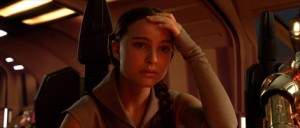 As a female fan, I’ll also admit I’ve struggled at times with Padmé’s character. She does make some poor choices – but so do Luke, Han, Leia, Lando, Anakin, Obi-Wan, and Yoda. Was it a lack of strength that caused her to fall in love with Anakin? Not at all. The biggest bad decision – to lie to everyone about their marriage – was one they made together. Yet, those two characters aren’t the only ones caught telling a lie or at least a twisted truth within the scope of the movies. Each of these characters, Padmé included, allow their feelings for others to influence the choices they make throughout the saga. Many forms of love – brotherhood, friendship, camaraderie, familial, and true love – drive each characters’ failings, and not one of them is immune. So why then is Padmé’s choice to love and be loved often met with the most disdain?
As a female fan, I’ll also admit I’ve struggled at times with Padmé’s character. She does make some poor choices – but so do Luke, Han, Leia, Lando, Anakin, Obi-Wan, and Yoda. Was it a lack of strength that caused her to fall in love with Anakin? Not at all. The biggest bad decision – to lie to everyone about their marriage – was one they made together. Yet, those two characters aren’t the only ones caught telling a lie or at least a twisted truth within the scope of the movies. Each of these characters, Padmé included, allow their feelings for others to influence the choices they make throughout the saga. Many forms of love – brotherhood, friendship, camaraderie, familial, and true love – drive each characters’ failings, and not one of them is immune. So why then is Padmé’s choice to love and be loved often met with the most disdain?
The ability to love and connect with others – to choose our friends, brothers- and sisters-in-arms, and lovers – is part of what separates humans from animals. It is our nature to make connections, to seek out companionship, to not want to be alone. It is the love of a boy for his father that ultimately turns back the darkness in Return of the Jedi. But wasn’t that love, which is so strong, heroic and mythic in Luke Skywalker, exactly what Padmé expresses in her dying breath in Revenge of the Sith?
In some ways, the perception of her character has been rooted in a double standard. Even women, who would be more likely to identify with her character, have held the young queen, who at the age of fourteen stood up to the oppressive grip of the Sith machinations, to a different standard. I know, because I held her to a different standard. Women struggle with our own identities. We want to be independent; some feminist perspectives say we shouldn’t need a man, and should be able to have kids on our own and careers of our own choosing. In reality, though, no one, not men and not women, wants to be alone. Who we choose to share our lives with and how we do so, that’s a question each person has to answer at some point in his or her life. Sometimes loneliness fools us into making poor choices, but the love of others can also inspire people to do great deeds, to become more than we would have been otherwise. It is this dueling nature of love that has defined many epic stories.
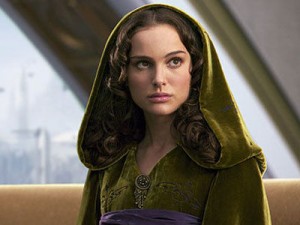 Queen Amidala and her alter ego Padmé from The Phantom Menace were the easiest version of her character to see as heroic. She was poised, confident, a warrior, defiant, and a leader. In Attack of the Clones, though, her choices are tougher to relate to. I found myself wondering why she needed Anakin? Where had the independent, tough young woman gone? Back around the time of Episode Three some very astute fans, who wrote their own stories with Padmé, made some very compelling arguments in defense of her character.
Queen Amidala and her alter ego Padmé from The Phantom Menace were the easiest version of her character to see as heroic. She was poised, confident, a warrior, defiant, and a leader. In Attack of the Clones, though, her choices are tougher to relate to. I found myself wondering why she needed Anakin? Where had the independent, tough young woman gone? Back around the time of Episode Three some very astute fans, who wrote their own stories with Padmé, made some very compelling arguments in defense of her character.
Truly, how are Padmé’s choices any different than Luke’s or Leia’s in the Original Trilogy? They make decisions led by their heart and not necessarily their heads – some of them not necessarily the best decisions, either. Rushing off to Bespin to save his friends, Luke motives are as much selfish as they are selfless, yet he comes off as sympathetic. By the end he’s lost a hand and learned an awful truth about his father. Leia abandons her duty to the Rebellion to go save Han on Tatooine. Ultimately, their decisions lead to successful outcomes, unlike Padmé, whose decisions only for a time prevent Anakin from falling over the precipice that the death of his mother creates. But there are plenty of strong characters, male and female, who don’t win in the end. The fact that the character fails to achieve her intended goal doesn’t mean she wasn’t strong to try. George Lucas created remarkable parallels between the two trilogies, and not only between Anakin and Luke, but also Padmé and both her children. Mapped back against their parents, Luke’s and Leia’s greatest strengths – compassion and political prowess – come from their mother.
Or to look at it another way: did Padmé truly fail to save Anakin? Or did she just work the long way around it, come at it from a different angle, much like my struggles with that tack trunk? How much courage must it have taken to not tell Obi-Wan, the one man strong enough to fight Anakin, where Anakin was? How much bravery does it take a defenseless person to beseech a Sith to come back to the light? Isn’t that exactly what makes Luke the redemptive hero of the Skywalker saga?
Now that I’ve made you consider those things, I hope you’ll check back in a couple days for a more comprehensive look at the life of Padmé Amidala, Queen of Naboo, Republic Senator, wife to Anakin Skywalker, and the woman who believed he’d ultimately make the right choice.
The next post in our series about Padmé is The Life and Death of Padmé – Without Lore, Is It Just Lipservice for the Leading Lady of Star Wars?
Tricia has completed her first novel, Wynde – a military science fiction with a fantastical twist that features heroines Vespa and Gemini. For excerpts and tales of her adventures in creating a fictional universe, hop over to TriciaBarr.com.
For updates on all things FANgirl follow @FANgirlcantina on Twitter or like FANgirl Zone on Facebook. At times she tries the Tumblr.
- REVIEW: Tales of the Empire - May 3, 2024
- Let’s Win the Season of the Force Scavenger Hunt - April 10, 2024
- Hyperspace Theories: Metamorphosis and Sacrifice in The Bad Batch Season Two - March 22, 2024









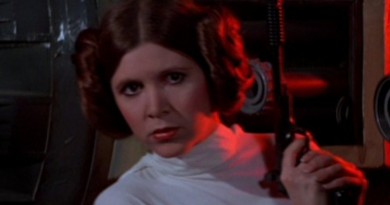
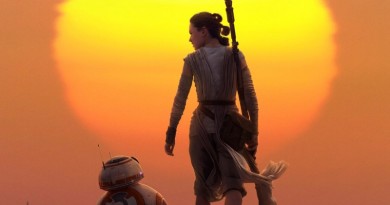
Couldn’t have said it better myself about a greatly misunderstood character.
Someone had to fall in love with Anakin in order for there to have been a Luke and Leia, and things weren’t going to end well for her. That was a given long before we even knew what her name was. People seem to think Padmé had to prove her strength by shooting Anakin in the head as “I Will Survive” blares in the background. They seem to think if you are intelligent and capable, you are not ever supposed to fall in love with a damaged soul or desire for something more than political power and the ability to fight alongside the boys. I thought Padmé was great. She knew Dooku was trying to kill her while the Jedi babbled about Dooku being too nice of a guy for that sort of thing. While Anakin and Obi-Wan were wetting their undies in the Geonosis arena, Padmé was already climbing up to get out of the way of the monsters. She fought the nexu as effectively as the guys were fighting their monsters. She survived a battle that killed a crapload of Jedi. She fought for her planet in TPM and organized the resistance against the Trade Federation. Palpatine was using her as a pawn but he failed to understand the power of her uterus ;). Other fans didn’t like the rather Victorian way she died, but in retrospect, it was a mystical exit rather than something predictable and mundane like getting shot, blown up, or impaled by a lightsaber.
Looking forward to more.
I love the idea that she did the full circle in redeeming Anakin. I’d never thought of Leia and Luke as a continuance of Padame before. You are right though. All of the twins’ admirable traits ultimately come from their mother. I found her as a strong willed and formidable woman-girl in the beginning and while I think she continued with such traits on a less obvious scale during her love affair with Anakin, I feel she died with those same traits.
With Leia, one thing people seem to forget about her slavery is she not only went to save her man, but when she was dressed as an inslaved dancing girl and chained to Jabba (a being that I see as a great metaphor for traditional patriarchy) is she FREED HERSELF. I see Slave Leia as an admirable character, rather than a repressed one. She didn’t wait for anyone to save her, rather, she used her slave chains to kill her ‘owner’ and defeat one of the more dangerous and unsavory characters in the galaxies. She didn’t use the force, but her bare hands. Slave Leia kicked butt harder than all the men with their toys. I’d argue both Padame and Leia used their interlect, political prowess and leadership skills as a blade that is stronger than a lightsaber or blaster too. Just sayin’…
I’m disappointed that you don’t talk more about Padme’s death in this article, because that’s a such a major sticking point for everyone I’ve heard criticize Padme’s portrayal. I personally have a hard time believing in the strength of a character whose identity is so bound to one person that they literally die from that person’s loss, or disillusionment in them, or shame at being unable to save them–that’s not romance or wife-identity, that’s dangerous codependency. She’s lying there having just given birth to two healthy children, and she can’t be bothered to pull it together for their sakes. She even tells Obi-wan that there’s still good in Anakin, but she’s not willing to live to fight for it–she gives up on him and foists responsibility off on others.
I don’t blame Padme for any of this, it’s all on George, who I suspect felt uncomfortable with having her death occur offscreen between the trilogies (or maybe he genuinely thought such a death was romantic?). It’s all so incredibly inconsistent with everything else we see of her character, and supremely disappointing.
I’m in agreement with anison here. How she dies is what sticks in my throat a bit, it was a frustrating ending to a movie that didn’t use her well. It drives me up the wall that all the scenes showing the formation of the Rebellion (thus giving Padme something else important) were cut from the movie.
Yeah I think it really is the death that bugs most people. It definitely bothers me. At the very least she could have died of some legitimate medical issue brought on by her injuries or by the pregnancy. Even Juliet needed to stab herself in order to die after having lost her love and will to live.
I think another reason she doesn’t quite seem to measure up on the strength front is that she really kind of fades into the background in the third movie. Other than act as an adjunct to Anakin and give birth, she doesn’t really get that much to do so she kind of fades away and seems to go out with a whimper. Perhaps if she’d had some sort of mission/action sequence/ covert rebel operation that gave her a clear existence outside of Anakin, she wouldn’t come across that way.
I blame the plotting and writing – and yes, I know that it’s an easy target with the prequels – but I blame it anyway.
Just to make an observation: some of the bit about rebel action/covert activity is in the book. There are some clandestine meetings with those who end up leading the Rebellion, and other use of her character. She’s part of the movement to insist Palpatine try diplomacy once Dooku is dead. Very likely it made the novelization and was cut from the movie due to length. It’s a shame. Some of it’s good stuff and apparently didn’t even make it far enough to land in the extras DVDs (unless it’s on the Blu Rays I sadly can’t see.)
Thanks so much for the great replies. I’ll address quickly the point anison brought up – Padme’s death. We are definitely planning to discuss that part of her portrayal because what each person has expressed about anison’s post is where we felt the most characterization discussion would take place. When we planned this series, I felt we needed to make people think about “strength” before getting into the tough stuff, why her portrayal fell short in some fans’ eyes. Actually, I love this input because it’ll make the blog that discusses RotS better. So please keep up the commentary.
I agree with anison, definitely her death has a lot to do with how she is perceived, and I agree with Sarah, too. A ruptured uterus, or bleeding that can’t be stopped, or her throat too badly damaged by Vader would have been more believable. But to have nothing wrong with her, and two children she has just given birth to (also unrealistically…)who need her – and she just gives up because the man she loves has turned evil? No, it doesn’t wash with me. In fact, it angers me that this strong woman was given such a pathetic end.
Also… pregnant with twins and she runs down the ship’s ramp and across the landing platform at Mustafar. I’m sorry… that far along she would hardly be able to waddle. The size of her bump is also too small for the healthy size of the kids she give birth to.
I know this reply comes rather late but I can’t help but respond to Treena’s comment: “and she just gives up because the man she loves has turned evil?” Let’s also keep in mind that Padme’s world was shattered: The Republic has become a Galactic Empire (notice it is she who says “so this is how liberty dies-with thunderous applause”), the very Republic she fought so hard for, the Jedi friends she made are gone or have disappeared and now her own husband is spouting despotic ideals-and he wants her in on it. If she had lived, she would have to go into hiding; where would she go as a single mom with no career? Let’s also remember that Palpatine/Vader are still hunting jedi and the infant twins would have been high on their list. If Padme had lived with them around they could find her and kill her anyway…
As for her pregnancy, yes it does seem unrealistic, but Lucas isn’t the only filmmaker guilty of inaccurately portraying pregnancy, though I always got the impression that Padme’s childbirth was induced.
Pingback:The Life and Death of Padmé – Without Lore, Is It Just Lipservice for the Leading Lady of Star Wars? « fangirlblog.com
Pingback:The Heroine’s Journey: Defining Concepts « fangirlblog.com
I love this. I just have stared for a month at slave Leia on a calender and been appalled – (in part because they put her in February. Made me cold just looking at her!) And I wasn’t thrilled with the way it symbolizes her. Then I smiled as I considered the justice of the situation. The creature that forced her to wear that outfit was strangled by it’s chain! An often overlooked warning in that I think.
And I love Padme, in some ways more than Leia. Leia in the first two movies came across as always angry. (Not without cause!) But then, Padme had reason too. She was so strong in Phantom Menace. Wise in Attack of the Clones and in Revenge of the Sith I can hardly judge her for her tears, Anakin’s fall had me crying too even though I knew it was coming. (And I NEVER cry at movies!) I don’t think it so far fetched she would die from heartbreak. You really can die of the stress of a broken heart, according to studies. And even then she somehow, someway, seems to have implanted the notion that Anakin could be redeemed in her son. (And if that forgiveness isn’t strength I don’t know what is!)
And how many others were as close as to the pain as Padme? She saw all that led up to it! We will never know if she would have drawn Anakin back: Obi-Wan’s intervention interfered. But we do know he didn’t actually attack her for arguing like he did Obi-Wan. He didn’t do that until he thought she was in collusion with him to kill him. Twisted thinking, but even then he didn’t knowingly kill her. She was alive when they parted.
I’m very unhappy with the lack of ‘Padme’ options for fans. I’ve got wall art sticker sets for the Clone Wars: 2 Yodas, various jedi and villains, R2, 3PO, ….NO Padme. Same for other sticker sets. Awesome 12 inch Sideshow and even decent Hasbro figures of Anakin and Obi-Wan and others. But after the Phantom Menace….no decent Padme. Yes, they had a version but not nearly as good as the others. Come on people. She’s the mother of Luke and Leia, without whom the rebellion hadn’t a prayer.
Pingback:Nobody Knows Where They Might End Up | ...this is what comes next
Strength is the ability to withstand adversity and the means to achieve ones objective.
Pingback:episode 123 – Fangirl Tricia Barr – The Geek Embassy
Pingback:ConGregate 2015 – Prelim Schedule – The Geek Embassy
Pingback:The Power to Save Padmé – FANgirl Blog